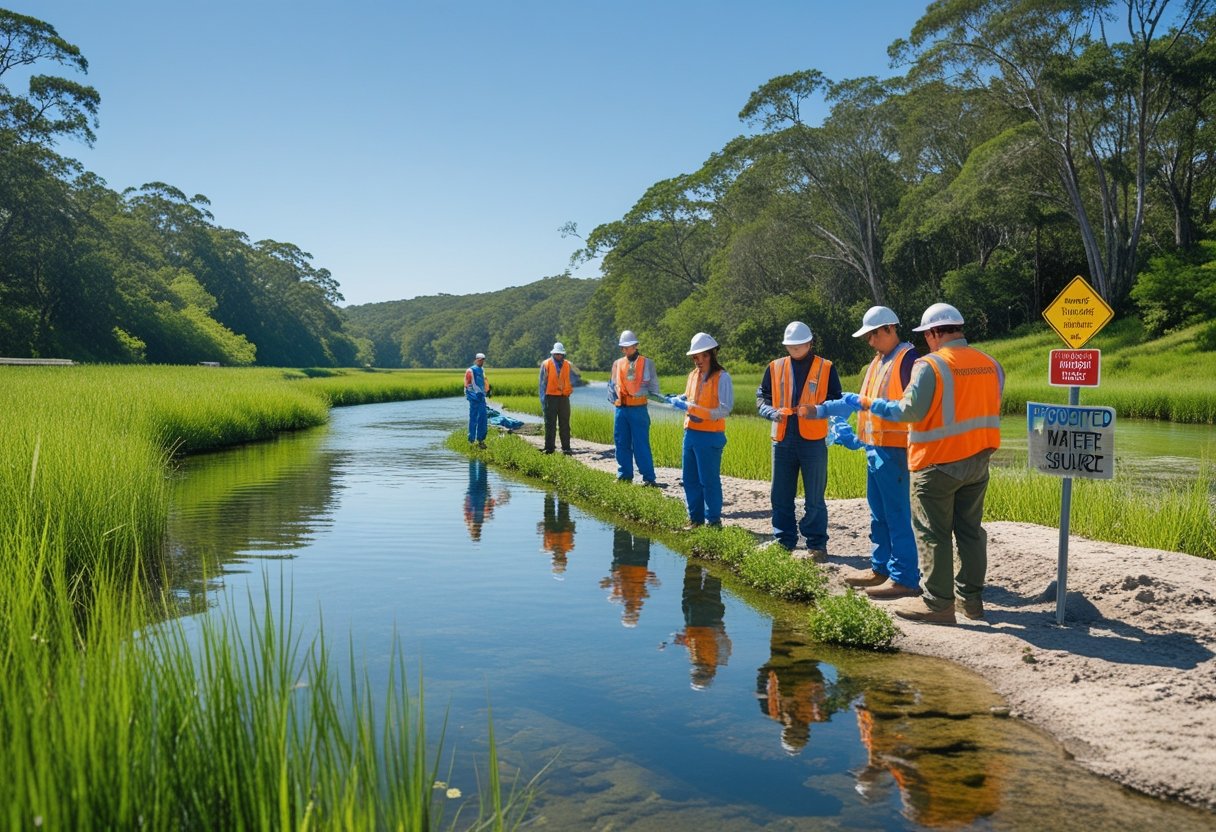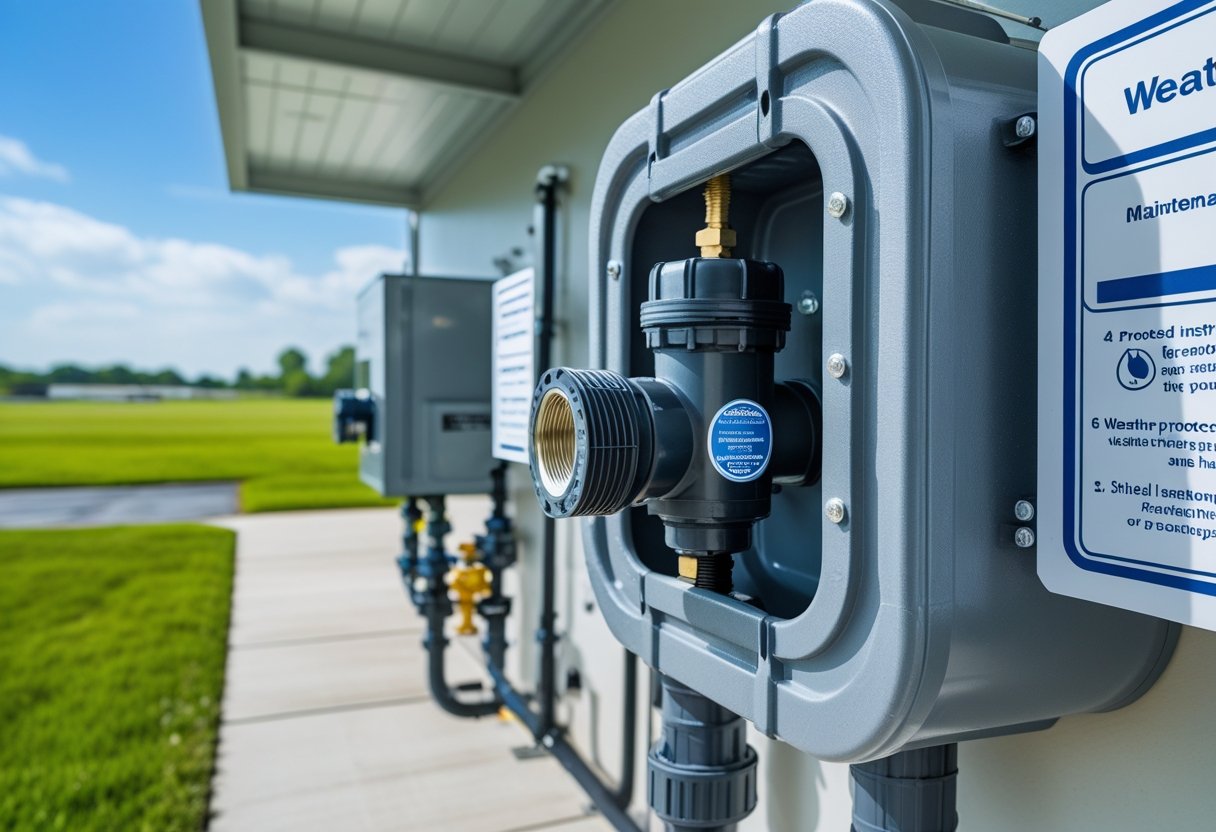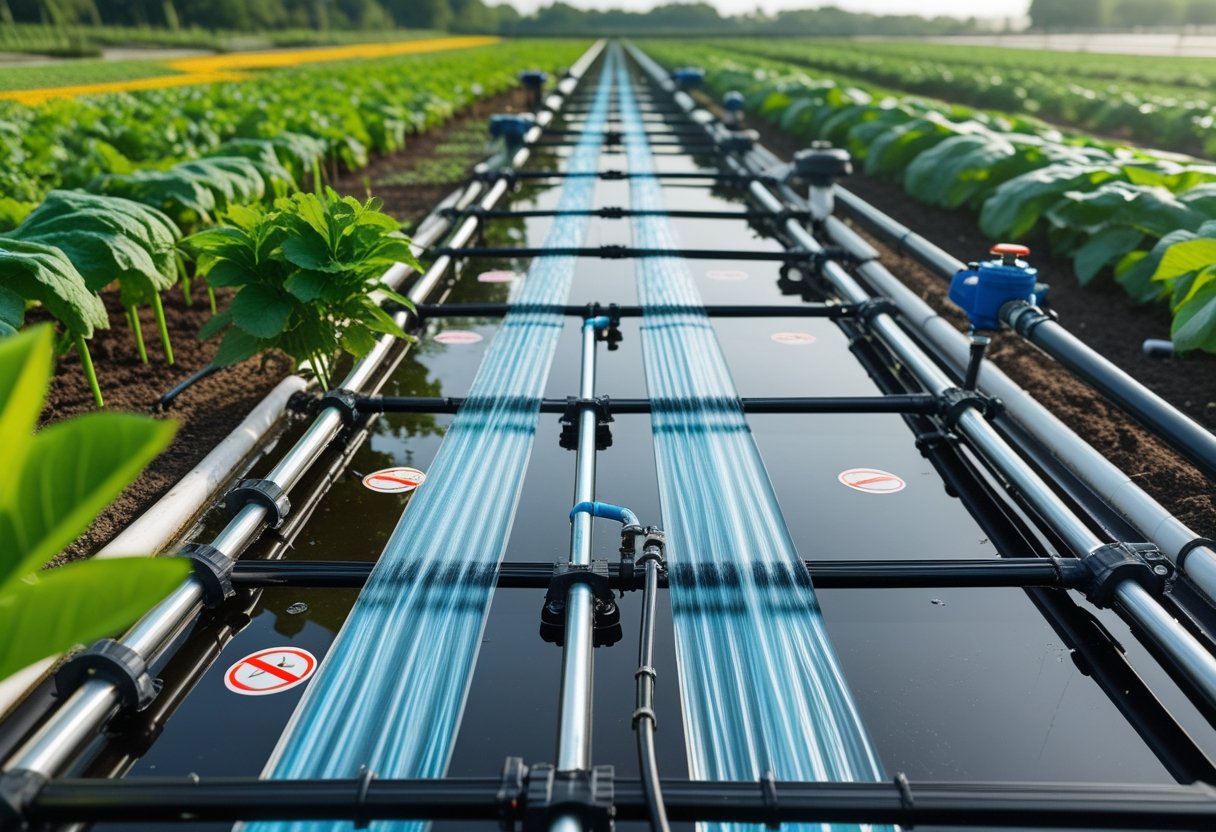Backflow inspection service is one of the most important steps you can take to protect your home’s plumbing during summer.
From increased water usage for gardens and pools to hosting guests who put extra strain on your fixtures, your plumbing needs to be ready for the season. While most homeowners check their sprinklers and outdoor faucets, many overlook one critical element: the backflow prevention system.
A backflow inspection is the most important plumbing check you can make before summer begins, as it prevents contaminated water from flowing back into your clean water supply.
When temperatures rise, the risk of backflow increases due to higher water demands creating pressure changes in your system. This inspection ensures your drinking water remains safe while protecting your family from potential health hazards.
We recommend scheduling a professional backflow inspection by early June to avoid the summer rush. This simple preventive measure can save you from costly emergencies and give you peace of mind as you enjoy the season.
Many municipalities actually require annual backflow testing, so checking this off your summer plumbing checklist also keeps you compliant with local regulations.
This guide breaks down the must-do plumbing tasks for the season, highlighting why timely backflow inspections by certified professionals should be at the top of your checklist:
- Why backflow inspection should top your summer plumbing checklist
- Key plumbing maintenance tasks for the summer season
- How to prepare your plumbing system for summer
- When to call a professional plumbing service
Stay compliant, avoid costly damage, and keep your water supply safe all summer long.
Why backflow inspection should top your summer plumbing checklist
Backflow prevention is a critical yet often overlooked component of home plumbing maintenance. Regular inspection helps protect your water supply from contamination and prevents potential health hazards.
Understanding backflow risks
Backflow occurs when water flows in the opposite direction than intended, allowing contaminated water to enter your clean water supply. This typically happens due to pressure changes in your plumbing system, which are more common during summer months when water usage increases.
Heat expansion can damage backflow preventers, making summer an ideal time for inspection. Outdoor activities like filling pools, extended lawn watering, and using garden hoses all increase backflow risks.
Many homeowners don't realize that backflow preventers are installed on their main water supply line. These devices require annual professional inspection to ensure proper functioning.
We recommend checking your local regulations, as many municipalities require regular backflow testing to maintain compliance with health codes.
Seasonal backflow inspection: Why timing matters in summer
Summer presents a unique set of risks for your plumbing system, rising temperatures, higher water usage, and added pressure on backflow prevention devices. That’s why seasonal backflow inspection is best scheduled in late spring or early summer, before peak demand begins.
Warmer weather can expand pipe materials and weaken seals inside your backflow preventer. At the same time, activities like filling pools, using irrigation systems, and washing cars dramatically increase the chance of pressure fluctuations that trigger backflow.
Scheduling your inspection early in the season offers key benefits:
- Avoids the late-summer rush for appointments
- Ensures your device functions before demand peaks
- Gives time to make repairs before regulations or health issues arise
A properly timed inspection minimizes disruption, keeps your system compliant, and protects your family’s water quality all summer long.
What happens if you skip a backflow inspection
Neglecting backflow inspection can lead to serious problems. Contaminated water may contain bacteria, chemicals, or other harmful substances that pose significant health risks to your family.
Repair costs for water damage from backflow incidents can be substantial. What might cost $75-150 for a professional inspection could save thousands in potential damage repairs.
Backflow issues can affect not just your home but your entire neighborhood's water supply. You could be legally liable if your faulty backflow preventer contaminates the municipal water system.
Insurance companies may deny claims related to backflow damage if you can't prove regular maintenance. Adding backflow inspection to your summer plumbing checklist provides documentation of your diligence.
We strongly advise scheduling this inspection with qualified plumbing services before peak summer water usage begins.
Key plumbing maintenance tasks for the summer season
Summer is the perfect time to ensure your home's plumbing system is in top condition. Regular maintenance prevents costly repairs and keeps everything flowing smoothly during the warmer months.
Inspect indoor and outdoor plumbing for summer leaks
Leaks can waste water and lead to expensive damage if left unchecked. We recommend starting your inspection at your outdoor fixtures since they're most vulnerable to winter damage. Look for dripping faucets, wet spots, or unusually green patches in your lawn that might indicate underground leaks.
Don't forget to check indoor fixtures too. Examine under sinks, around toilets, and behind washing machines for any signs of moisture. A simple way to detect hidden leaks is to check your water meter, then avoid using water for two hours. If the meter changes, you likely have a leak somewhere.
Inspect all appliance hoses, especially those connected to washing machines and dishwashers, as these can deteriorate over time. Replace any hoses that show cracks or bulges.
Prioritize drain cleaning
Summer activities often lead to more frequent showers and laundry, putting extra strain on your drains. Regular cleaning prevents clogs and backups during these busy months.
Start by using a mixture of vinegar and baking soda in all drains monthly. Pour half a cup of baking soda followed by half a cup of vinegar, let it sit for 30 minutes, then flush with hot water.
Kitchen drains need special attention. Avoid putting grease, coffee grounds, and food scraps down the drain. Use drain strainers to catch hair and debris before they cause problems.
Don't forget outdoor drains! Clean gutters and downspouts to ensure proper water flow during summer storms. Test outdoor drains by running water through them to check for proper drainage.
Get your water heater ready for summer demand
Your water heater works overtime during summer with increased showering and laundry needs. Proper maintenance ensures efficiency and extends its lifespan.
We recommend flushing your water heater annually to remove sediment buildup. This simple task improves efficiency and prevents premature failure. Turn off the power source, attach a hose to the drain valve, and drain a few gallons until the water runs clear.
Check the temperature setting—120°F is ideal for most homes. This prevents scalding while saving energy. Inspect the pressure relief valve by lifting the lever and letting it snap back. Water should flow into the drainpipe.
For older units (8+ years), consider having a professional inspection. They can identify potential issues before they become major problems and recommend replacements if necessary.
How to prepare your plumbing system for summer
Summer brings increased water usage and stress on your plumbing system. Taking preventive steps now can save you from expensive repairs and interruptions during the hottest months.
inspect the main water supply
Start by checking your main water supply line for any signs of damage or wear. Look for wet spots, unusual puddles, or unexplained increases in your water bill that might indicate hidden leaks.
Test your water pressure with a simple gauge from the hardware store. Ideal pressure ranges between 40-60 PSI. Higher readings can strain pipes and appliances, while lower readings might signal blockages.
Examine your water meter before and after a two-hour period when no water is being used. If the reading changes, you likely have a leak somewhere in your system.
Pro tip: Clean the area around your main shut-off valve and test it to ensure it works properly. This simple step can prevent major water damage during emergencies.
Assess outdoor plumbing fixtures
Outdoor fixtures face harsh conditions year-round and need special attention before summer. Inspect all outdoor faucets and hose bibs for leaks, drips, or frost damage from winter.
Turn on each outdoor faucet and check for:
- Water pressure issues
- Strange noises when running
- Leaks around handles or connections
- Cracks in the fixture body
Don't forget to examine garden hoses for cracks, leaks, or damaged fittings. Replace worn washers in hose connections to prevent water waste.
If you have a sprinkler system, run a complete test cycle. Look for broken heads, uneven spray patterns, or puddles that might indicate underground leaks. This inspection can save gallons of water and prevent landscape damage.
When to call a professional plumbing service
While some plumbing tasks can be handled on your own, others require professional expertise to prevent further damage. Knowing when to bring in the experts can save you time, money, and frustration in the long run.
Signs you need immediate help
Plumbing emergencies often appear without warning. Call a professional immediately if you notice water discoloration, as this may indicate contamination or pipe corrosion. Strange gurgling sounds from drains or toilets suggest blockages in your sewer line that require specialized equipment to clear.
Unexplained spikes in your water bill often point to hidden leaks. Professional leak detection services can locate these issues using advanced tools like acoustic detectors and thermal imaging cameras.
If your water pressure suddenly drops throughout your home, this could indicate a serious problem with your main water line. Don't ignore sewage odors – they suggest potentially hazardous backflow issues that need immediate attention.
Multiple slow drains throughout your home usually signal a main line clog rather than individual drain problems.
Selecting a qualified plumber
When choosing a plumbing service, verify proper licensing and insurance first. This protects you from liability and ensures the plumber meets industry standards. Look for companies with specific backflow certification if you need inspection or repairs.
Ask about their experience with similar issues. A qualified plumber should confidently explain the problem and proposed solution in simple terms.
Check online reviews and ask for references from past customers. Reputable services will proudly share this information.
Request detailed written estimates before work begins. This should include labor costs, parts, and any potential additional charges.
We recommend choosing plumbers who offer warranties on their work. This demonstrates confidence in their repairs and provides protection if issues reoccur.
Certified backflow inspector: What credentials to look for
Hiring a certified backflow inspector is not just a matter of quality, it’s a legal requirement in many areas, including California. To ensure your inspection is valid and compliant, the professional must meet state-mandated certification standards.
As of current regulations, all backflow testers operating in California must hold valid certification from a SWRCB-recognized program. This rule is in effect through at least June 30, 2027, ensuring homeowners receive inspections from qualified professionals who meet strict state standards.
These programs include coursework, hands-on testing, and continuing education. Certificates are typically valid for three years and must be renewed before expiration to remain active.
Before scheduling your inspection, confirm that the plumber or tester:
- Holds a current SWRCB-approved certification
- Has completed training specific to your type of backflow device (e.g., RPZ, PVB, DCVA)
- Is listed with your local water authority as an approved provider
Always request proof of certification and verify that the inspector will submit the official test results to your water district, as many municipalities require direct submission to remain compliant.
Conclusion
As summer water usage surges, so does the risk of backflow in your plumbing system. From lawn irrigation to outdoor entertaining, your pipes are under more pressure, making a professional backflow inspection more critical than ever.
This preventive step protects your drinking water, helps avoid expensive damage, and ensures you meet local code requirements.
Ready to check this off your summer plumbing checklist? Schedule your certified backflow inspection with Pacific Backflow today and ensure safe, compliant water service all season.











